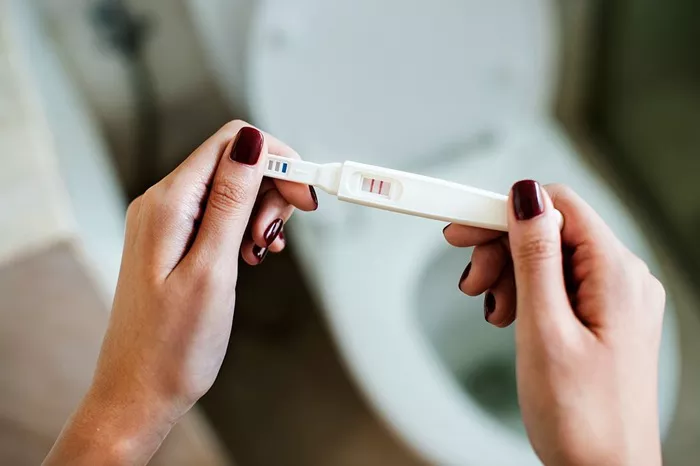Spotting during early pregnancy can be a cause of concern for many expectant mothers. Here’s a detailed exploration of what early pregnancy spotting looks like, its causes, and when to seek medical advice.
What is Early Pregnancy Spotting?
Early pregnancy spotting refers to light bleeding that occurs during the first trimester of pregnancy. It can range from light pink to dark brown in color and is often lighter than a typical menstrual period. Spotting differs from heavy bleeding, which may indicate a more serious issue.
Appearance of Early Pregnancy Spotting
Color:
The color of spotting can vary, including light pink, dark brown, or even red.
Consistency:
It is usually lighter than menstrual bleeding and often appears as drops rather than a flow.
Duration:
Spotting can occur intermittently or persist for a few hours to a couple of days.
Causes of Early Pregnancy Spotting
Several factors can contribute to spotting during early pregnancy:
Implantation Bleeding:
Around 10-14 days after conception, some women experience light spotting when the fertilized egg attaches to the uterine lining.
Hormonal Changes:
Fluctuations in hormone levels, particularly estrogen and progesterone, can cause slight bleeding.
Cervical Changes:
Increased blood flow to the cervix during pregnancy can make it more prone to bleeding, especially after intercourse or a cervical exam.
Miscarriage or Ectopic Pregnancy:
In some cases, spotting may indicate a miscarriage or an ectopic pregnancy, where the embryo implants outside the uterus.
SEE ALSO: Can I Take a Pregnancy Test After Implantation?
When to Seek Medical Advice
While spotting can be normal, it’s crucial to consult a healthcare provider if:
Heavy Bleeding:
Bleeding that is similar to a menstrual period or heavier.
Severe Pain:
Intense cramping or abdominal pain accompanied by bleeding.
Tissue Passing:
Passing of tissue or clots.
Diagnosis and Evaluation
Physical Examination:
A pelvic exam to check the cervix and uterus.
Ultrasound:
Imaging to visualize the pregnancy and check for any abnormalities.
Blood Tests:
Monitoring hormone levels such as hCG (human chorionic gonadotropin).
Management and Treatment
Management of early pregnancy spotting depends on its underlying cause:
Observation:
In many cases, no treatment is needed, and the spotting resolves on its own.
Bed Rest:
Advised in cases where the spotting is associated with a threatened miscarriage.
Medication:
Progesterone supplements may be prescribed if low progesterone levels are suspected.
Coping with Early Pregnancy Spotting
Emotional Support:
Spotting can be stressful; seeking emotional support from partners, family, or support groups can be beneficial.
Rest and Relaxation:
Ensuring adequate rest and reducing stress levels can help alleviate anxiety.
Conclusion
Early pregnancy spotting is a common concern but is not always a cause for alarm. Understanding its appearance, causes, and when to seek medical advice can help expectant mothers navigate this early stage of pregnancy with confidence and awareness. Always consult a healthcare provider for personalized advice and management.
By addressing these aspects comprehensively, expectant mothers can better understand and manage early pregnancy spotting, promoting both physical and emotional well-being during this crucial time.
FAQs
How do you know if it’s pregnancy spotting?
Pregnancy spotting can be distinguished from other types of bleeding by its characteristics:
Timing: It typically occurs early in pregnancy, around the time of implantation (6-12 days after conception) or in the first trimester.
Appearance: Usually light in flow, often pink or brown in color, and may be intermittent.
Duration: It tends to last for a short period, such as a few hours to a couple of days.
Absence of Symptoms: Unlike menstrual bleeding, pregnancy spotting is not accompanied by the usual symptoms of a period, such as heavy flow or cramping.
If you experience bleeding during pregnancy, especially in the first trimester, it’s essential to consult your healthcare provider to confirm the cause and ensure everything is progressing normally.
How soon will I start spotting if I’m pregnant?
Spotting can occur as early as 6-12 days after conception, which corresponds to the time of implantation when the fertilized egg attaches to the uterine lining. This early spotting, known as implantation bleeding, is one of the earliest signs of pregnancy for some women.
Can I take a pregnancy test while spotting?
Yes, you can take a pregnancy test while spotting. Pregnancy tests detect the presence of human chorionic gonadotropin (hCG), a hormone produced by the placenta shortly after implantation. If you are experiencing implantation bleeding (early pregnancy spotting), there may already be enough hCG in your system to yield a positive pregnancy test result. However, if the test is negative and you continue to experience spotting or have concerns about pregnancy, consult your healthcare provider for further evaluation.
What is the first spotting in early pregnancy?
The first spotting in early pregnancy is often referred to as implantation bleeding. This occurs when the fertilized egg attaches itself to the uterine lining, typically around 6-12 days after conception. Implantation bleeding is usually light, lasts for a short period (a few hours to a couple of days), and may appear as light pink or brown discharge. It is considered a normal and common occurrence in early pregnancy for some women.
If you have any concerns about spotting or bleeding during pregnancy, always seek guidance from your healthcare provider for personalized advice and appropriate management.


